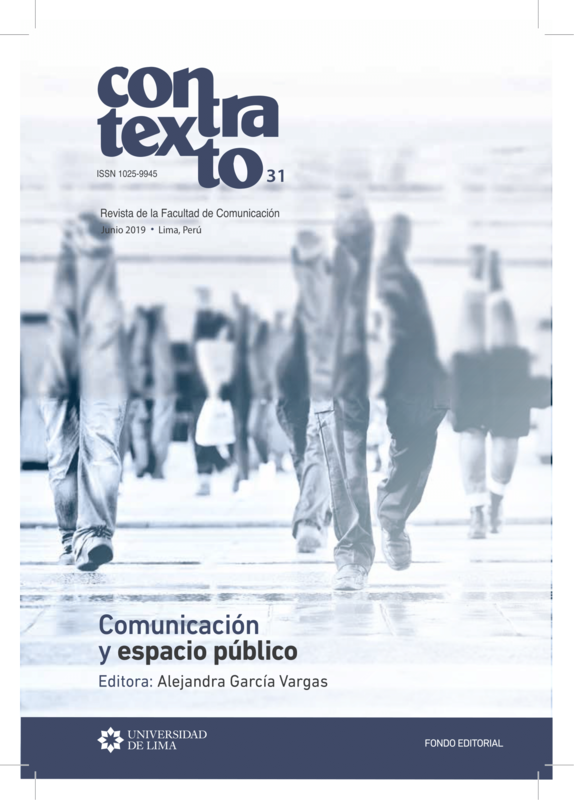The city as a narrative of violence and social exclusion in three textual fragments
DOI:
https://doi.org/10.26439/contratexto2019.n031.3896Abstract
This paper begins from assuming human life, social life, as narration and self-narration. In that sense, observing the city as a space for social narrative is not an idle exercise, because it allows to resignify, on an interdisciplinary basis, its field and space by the defamiliarization of the regulatory approaches of institutional discourses. Through the analysis of narration as a way of “representation”, the city is addressed as a multistage with different forms of violence and social exclusion portrayed in a literary text such as Mapocho, written by Nona Fernández (2002), and fragments of two testimonial documents such as Elena Poniatowska’s Hasta no verte, Jesús mío (2013), and Elizabeth Burgos’s Me llamo Rigoberta Menchú y así me nació la conciencia (1997). These literary works show the statement, temporal structure and guiding approach of narrations, as well as the significance and discursive articulation that narrate stories of three cities (Santiago de Chile, Mexico City and Guatemala) at a specific moment of history. This work aims to present the city as a narrative of violence and exclusion in a literary work (novel), from a ghostly journey that inquires about its origin, past and identity, and as a place that seems to be alien after the last dictatorial period in two testimonial fragments through the eyes of indigenous women.
Downloads
Downloads
Published
Issue
Section
License
All of the works published are licensed under a CC BY 4.0 Creative Commons Attribution license. (updated on March 1st 2021)
The content of the journal may be shared in any material or format. The content may be adapted, contributed upon and transformed. Both possibilities are only permitted in so far as they complete the following conditions:
- Attribution: Credit must be given where it is due, a link to the license must be provided and changes, if made, must be indicated. This should be done in the manner deemed appropriate, without suggesting that the licensor promotes you or your use of the material.
Ownership rights
The patrimonial rights for Contratexto are published under a Creative Commons BY 4.0 license, allowing authors to keep the patrimonial rights to their work without restrictions.
If a work published in Contratexto were to be copied, distributed, spread, or any other activities contemplated in the aforementioned license, the author(s) and the journal must be mentioned visibly and expressly.
Self-archive
This journal allows and encourages authors to post items submitted to the journal on personal websites or institutional repositories both prior to and after publication, while providing bibliographic details that credit, if applicable, its publication in this journal.


